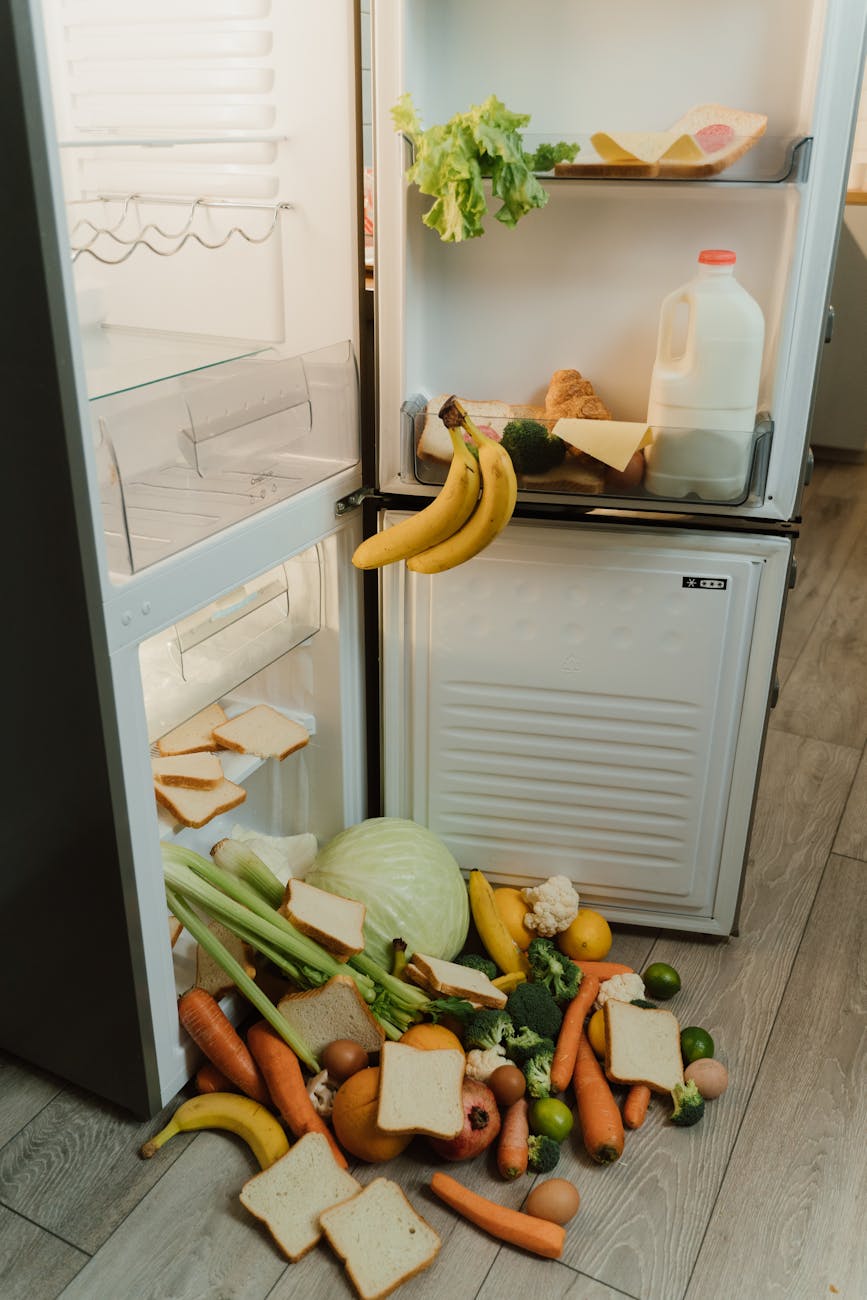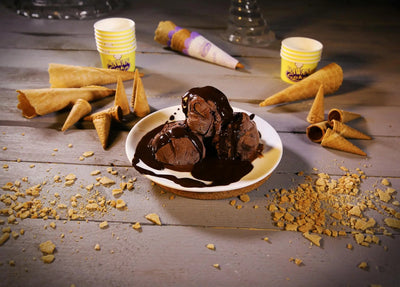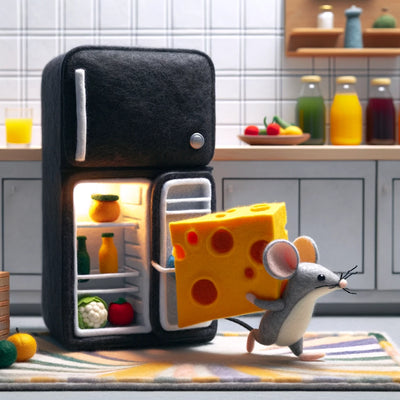Understanding Food Waste
Exploring the ramifications of food waste is essential for anyone looking to become more environmentally conscious and economical. By gaining insight into this issue, you can make informed decisions that benefit both your household and the planet.
The Impact of Food Waste
Food waste has significant environmental, economic, and social impacts. When food is discarded, not only are the resources used to produce, transport, and store it wasted, but the decomposition of food in landfills also generates methane, a potent greenhouse gas. The statistics surrounding food waste are staggering:
| Impact Type | Data |
|---|---|
| Environmental | Food waste contributes to 8% of global greenhouse gas emissions. |
| Economic | The average US household loses $1,600 annually due to wasted food. |
| Social | While food is wasted, 1 in 9 people globally suffer from undernourishment. |
Understanding these impacts can motivate you to adopt practices that minimize waste. You can start by learning how to extend the shelf life of food items, especially perishables. For insights on how to enhance your kitchen's functionality while reducing food waste, consider reading about retro looking refrigerators that combine style with modern preservation technology.
How Proper Storage Can Help
Proper storage of food, particularly leftovers, plays a pivotal role in reducing waste. By optimizing conditions in your refrigerator, you can prolong the freshness and edibility of food, thereby reducing the frequency of discarding spoiled items. Here are some strategies that can make a significant difference:
-
Temperature Regulation: Maintaining the right temperature in different zones of your fridge can extend the life of your food. For guidelines on the ideal fridge temperature, visit what temperature should your fridge be.
-
Container Selection: Using the appropriate containers for different types of leftovers can prevent contamination and preserve food quality. Learn more about choosing the right containers in chicken storage secrets.
-
Organization: Properly organizing your fridge can prevent overstocking and ensure that all items are visible and easily accessible. This reduces the chance of forgetting about stored food until it spoils.
By implementing these storage strategies, you can take a proactive step towards minimizing food waste in your home. Not only does this help your budget, but it also supports a sustainable lifestyle. For more tips on extending the longevity of specific food items, such as how to keep salsa fresher for longer, check out prolonging the life of salsa in your fridge.
Organizing Your Fridge
Organizing your refrigerator efficiently is a key step in saying goodbye to food waste and prolonging the life of your leftovers. By understanding the temperature zones within your fridge and learning the optimal placement for your leftovers, you can maximize their shelf life and enjoy your meals for longer.
Temperature Zones in Your Fridge
Your refrigerator has different temperature zones that can affect how well your leftovers are preserved. Typically, the bottom shelves are the coldest, which makes them ideal for storing raw meat, poultry, and fish. The upper shelves have a more consistent temperature, perfect for dairy, ready-to-eat foods, and leftovers. The door shelves are the warmest area and should be reserved for condiments and drinks.
| Fridge Zone | Suggested Items |
|---|---|
| Bottom Shelves | Raw meat, seafood, eggs |
| Upper Shelves | Leftovers, dairy products |
| Door Shelves | Condiments, juices, soda |
It's important to ensure your fridge is set to the right temperature to prevent spoilage. According to the FDA, refrigerators should be kept at or below 40°F (4°C). For more on this topic, read our article on mastering the perfect chill: what temperature should your fridge be.
Placement of Leftovers
Proper placement of leftovers in your refrigerator can not only help with organization but also ensure that they stay fresh for as long as possible. Here are some best practices for placing leftovers:
- Place leftovers on the upper shelves, in the back where it's coldest.
- Keep leftovers away from raw foods to avoid cross-contamination.
- Store leftovers in airtight containers to maintain freshness and prevent odors.
- Rotate your leftovers, placing the older ones in front for easy access.
Implementing these practices will help you reduce waste and enjoy your favorite dishes for days to come. For more on storing specific types of leftovers, check out our articles on chicken storage secrets: how to safely store cooked chicken in the fridge and maximize freshness: prolonging the life of salsa in your fridge.
By understanding your refrigerator's layout and adopting these storage tips, you can effectively prolong the life of your leftovers and contribute to reducing food waste. Remember, an organized fridge not only helps in preserving your food but can also elevate your kitchen aesthetics and make meal planning more efficient.
Tips for Storing Leftovers
Storing leftovers properly is a key strategy in the fight against food waste. With the right techniques, you can ensure that your meals stay fresh longer, allowing you to enjoy them again and reducing the need to throw away uneaten food. Here are some guidelines for storing your leftovers in a way that maintains their quality and safety.
Proper Containers for Storage
Choosing the right containers for storing leftovers is crucial for prolonging their freshness. Airtight containers are your best bet, as they prevent the circulation of air and the spread of odors inside your fridge. Containers made of glass or BPA-free plastic are preferred choices, as they can often go from fridge to microwave without any issues. Ensure the containers are clean and dry before use to avoid any contamination.
For solid foods, shallow containers are ideal as they allow for quicker cooling, reducing the time the food spends at temperatures that encourage bacterial growth. For soups or stews, leaving an inch of space at the top of the container can prevent any spillage as liquids expand when they freeze, if you choose to store them in the freezer for a longer shelf life.
Labeling and Dating Leftovers
Keeping track of when you stored your leftovers can help you use them before they spoil. Label each container with the content and the date it was stored. This simple step can help you prioritize which leftovers to eat first and prevent them from being forgotten at the back of the fridge.
You can create a chart to keep inside your fridge as a reminder of how long common foods last. Here's an example:
| Food Item | Fridge Lifespan |
|---|---|
| Cooked Poultry | 3-4 days |
| Cooked Fish | 3-4 days |
| Cooked Rice | 1-2 days |
| Pizza | 3-4 days |
Remember, these are general guidelines. Always check for signs of spoilage before consuming leftovers. For more specific storage times, like how long you can keep cooked chicken or bell peppers fresh, click on the links provided.
By following these tips, you can say goodbye to food waste and enjoy your leftovers for as long as possible. Proper storage not only helps reduce waste but also ensures that you're eating food that is safe and as delicious as when it was first prepared. For more information on how to optimize your fridge organization, check out our articles on mastering the art of refrigeration and maximizing freshness for different foods.
Maximizing Shelf Life
To combat food waste and ensure that your leftovers remain safe and enjoyable to eat, understanding how to maximize their shelf life in the fridge is essential. This involves being aware of expiration dates and recognizing signs of spoilage.
Understanding Expiration Dates
Expiration dates are provided by manufacturers as a guideline for when a product may begin to diminish in quality or safety. However, these dates can often be misleading, as many foods remain consumable beyond their "Sell By," "Use By," or "Best Before" labels. Knowing how to interpret these dates can prevent unnecessary waste of perfectly good food.
Here is a quick reference table to help you decode these common labels:
| Label Type | Meaning |
|---|---|
| Sell By | Suggested date to purchase the product by, not a safety indicator |
| Use By | Last date recommended for use while at peak quality |
| Best Before | Date indicating when the product may start to decline in quality but not necessarily unsafe to consume |
It’s worth noting that these dates do not account for how a product has been stored. You should always store your leftovers at the right temperature to extend their life. For advice on the ideal fridge temperature, refer to our article on mastering the perfect chill what temperature should your fridge be.
Recognizing Signs of Spoilage
Even with proper storage, all foods will eventually spoil. It's critical for your health to be able to identify when food is no longer safe to consume. Here are common indicators of spoilage:
- Odor: A strong or off-putting smell is a clear sign that food may have spoiled.
- Texture: Sliminess or a drastic change in texture can indicate bacterial growth.
- Color: Discoloration or mold growth often means the food is unsafe.
Should you notice any of these signs, it's best to err on the side of caution and dispose of the food. Being proactive in checking for spoilage can help maintain food safety and ultimately reduce waste. For more detailed information on how long certain foods last in the fridge, such as cooked chicken, refer to our in-depth exploration the cold truth discovering the lifespan of cooked chicken in the fridge.
By combining an understanding of expiration dates with the ability to spot signs of spoilage, you can more effectively manage your leftovers and say goodbye to food waste by prolonging their life in the fridge.
Utilizing Your Freezer
Your freezer can be a powerful ally in the fight against food waste. By freezing leftovers, you not only save meals for another day but also reduce the amount of food that might otherwise be thrown away. Here's how you can make the most of freezing your leftovers and adhere to best practices for freezing foods.
Freezing Leftovers
When it comes to freezing leftovers, there are a few key steps to ensure their quality and safety:
- Cool Down: Allow leftovers to cool to room temperature before freezing to prevent the increase of temperature inside your freezer which could affect other stored items.
- Portion Control: Divide the leftovers into meal-sized portions. This simplifies thawing and ensures you only reheat what you will consume.
- Airtight Containers: Use airtight containers or freezer bags to protect food from freezer burn and preserve flavor and texture.
- Leave Space: When using containers, leave a small amount of space at the top as food expands when frozen.
- Quick Freeze: If your freezer has a 'quick freeze' function, use it to rapidly lower the temperature of the leftovers, which helps preserve their quality.
By following these steps, you can extend the life of your delicious meals and enjoy them later. For more on the importance of organizing for preservation, check out master the art of refrigeration: choosing the right fridge top freezer.
Best Practices for Freezing Foods
Freezing foods is not just about stashing them in the freezer. Here are some best practices to ensure optimal preservation:
- Labeling: Always label your containers with the contents and the date of freezing. This practice helps you keep track of how long items have been stored and allows for proper rotation of foods.
- Freezer Temperature: Maintain your freezer at 0°F (-18°C) or below for the best food preservation.
- Avoid Refreezing: Once you have thawed leftovers, avoid refreezing them as this can degrade quality and potentially allow for bacterial growth.
- Thawing: Plan ahead and thaw frozen leftovers in the refrigerator or use the microwave if you are in a hurry.
- Usage Timeline: While freezing can prolong the life of foods, they should still be consumed within a reasonable time frame for the best quality.
| Food Item | Freezer Lifespan |
|---|---|
| Cooked Poultry | 4 months |
| Soups & Stews | 2-3 months |
| Cooked Pasta | 1-2 months |
| Pizza | 1-2 months |
For more detailed guidelines on the shelf life of specific foods, like "how long can you safely store pizza in the fridge?" visit our article on the cold truth: how long can you safely store pizza in the fridge.
Utilizing your freezer effectively not only helps in curbing food waste but also ensures you have a ready supply of meals for those busy days. With the right freezing techniques, you can say goodbye to food waste and enjoy your leftovers with as much gusto as when they were first prepared.
Creative Leftover Recipes
Transforming leftovers into delicious new dishes is a fantastic way to reduce food waste and get creative in the kitchen. With a few clever twists, you can turn last night's dinner into today's lunch or dinner without feeling like you're eating the same meal over and over again.
Transforming Leftovers into New Dishes
When you find yourself with leftovers, think of them as ingredients for your next culinary creation. Here are some ideas to get you started:
- Reinvented Pasta: Turn leftover pasta into a pasta bake by adding some cheese, vegetables, and perhaps a protein like chicken or shrimp. Bake until golden and bubbly.
- Savory Frittatas: Mix leftover roasted vegetables with eggs and cheese to create a frittata that works for any meal.
- Hearty Soups: Combine leftover proteins or veggies with broth, herbs, and spices to create a comforting soup.
- Stuffed Sandwiches: Use leftover meats and veggies as fillings for sandwiches or wraps. A panini press can turn these into warm, crispy treats.
- Fried Rice or Quinoa: Stir-fry leftover rice or quinoa with vegetables, egg, and soy sauce for a quick and easy dish.
For more inspiration on using your refrigerator to elevate your kitchen aesthetics, check out our articles on elevate your kitchen aesthetics retro looking refrigerators unleashed and the culinary edge experiencing the 48 inch french door fridge.
Tips for Meal Planning with Leftovers
Meal planning with leftovers doesn't have to be a chore. Here are some tips to help you incorporate leftovers into your meal plan:
- Inventory Check: Regularly check what leftovers you have in your refrigerator to incorporate them into upcoming meals.
- Flexible Recipes: Have a repertoire of recipes that are adaptable and can accommodate different types of leftovers.
- Portion Control: Store leftovers in portion-sized containers for easy meal prep throughout the week.
- Theme Nights: Assign theme nights, like "Taco Tuesday" or "Stir-Fry Saturday," where you can use various leftovers creatively.
- Label Everything: Always label your leftovers with the date stored to keep track of freshness. Find more on this in our article on labeling and dating leftovers.
By embracing the challenge of reimagining leftovers, you not only say goodbye to food waste but also add an exciting twist to your regular meal rotation. Remember, the key to prolonging leftovers in the fridge is proper storage and a bit of ingenuity in the kitchen.
Reducing Food Waste Mindset
In the journey to say goodbye to food waste and prolonging leftovers in the fridge, shifting your mindset towards how you buy and cook food plays a significant role. It's not just about storage; it's about approaching food with an awareness that encourages sustainability and reduces waste.
Buying and Cooking in Moderation
The first step in reducing food waste is to be mindful of your purchasing habits. When shopping, plan ahead and buy only what you need. This may mean more frequent trips to the store, but it ensures that you use all the fresh ingredients before they spoil.
Here are some strategies to consider:
- Meal Planning: Plan your meals for the week and purchase only the ingredients required. This reduces the likelihood of impulse buys that may not be used.
- Portion Control: Cook in quantities that you and your family can consume in one or two sittings. This helps to ensure that less food goes uneaten.
- Mindful Shopping: Be aware of your current pantry and fridge contents to avoid buying duplicates that may not be consumed in time.
By adopting a more conscientious approach to buying and cooking, you not only minimize waste but also save money in the long run.
Donating Excess Food
If you find yourself with more food than you can consume, consider donating to local food banks or shelters. It's a meaningful way to extend the life of food that would otherwise be wasted and contribute to your community.
Here's how you can engage in food donation:
- Research Local Options: Find nearby food banks or shelters that accept food donations.
- Check Food Safety: Ensure that the food you plan to donate is still safe for consumption. Refer to our articles on the lifespan of cooked chicken in the fridge or how long do onions really last in the fridge for guidance on food safety.
- Understand Donation Needs: Some organizations have specific needs or restrictions on what they can accept. Make sure to donate food that aligns with their requirements.
By incorporating these mindful habits into your daily routine, you contribute to a larger effort of reducing food waste. Remember, every small action counts towards a more sustainable future. For more information on effective storage that can extend the shelf life of your food, explore our articles on storing cooked salmon and prolonging the life of salsa in your fridge.
Get Your Upgrade or New Addition at Fridge.com
Shop the world's best brands at Fridge.com.
Whether you're searching for your perfect fridge, freezer, wine fridge, beer fridge, ice maker, or kegerator, we have what you need.
We also have tons of awesome articles about kitchen stuff and home news. Enhance your home, garage, backyard, patio, and office with the coolest essentials. With every necessary type of residential refrigerator or freezer in our collection, we've got you covered.
Elevate your game and shop now at Fridge.com!






